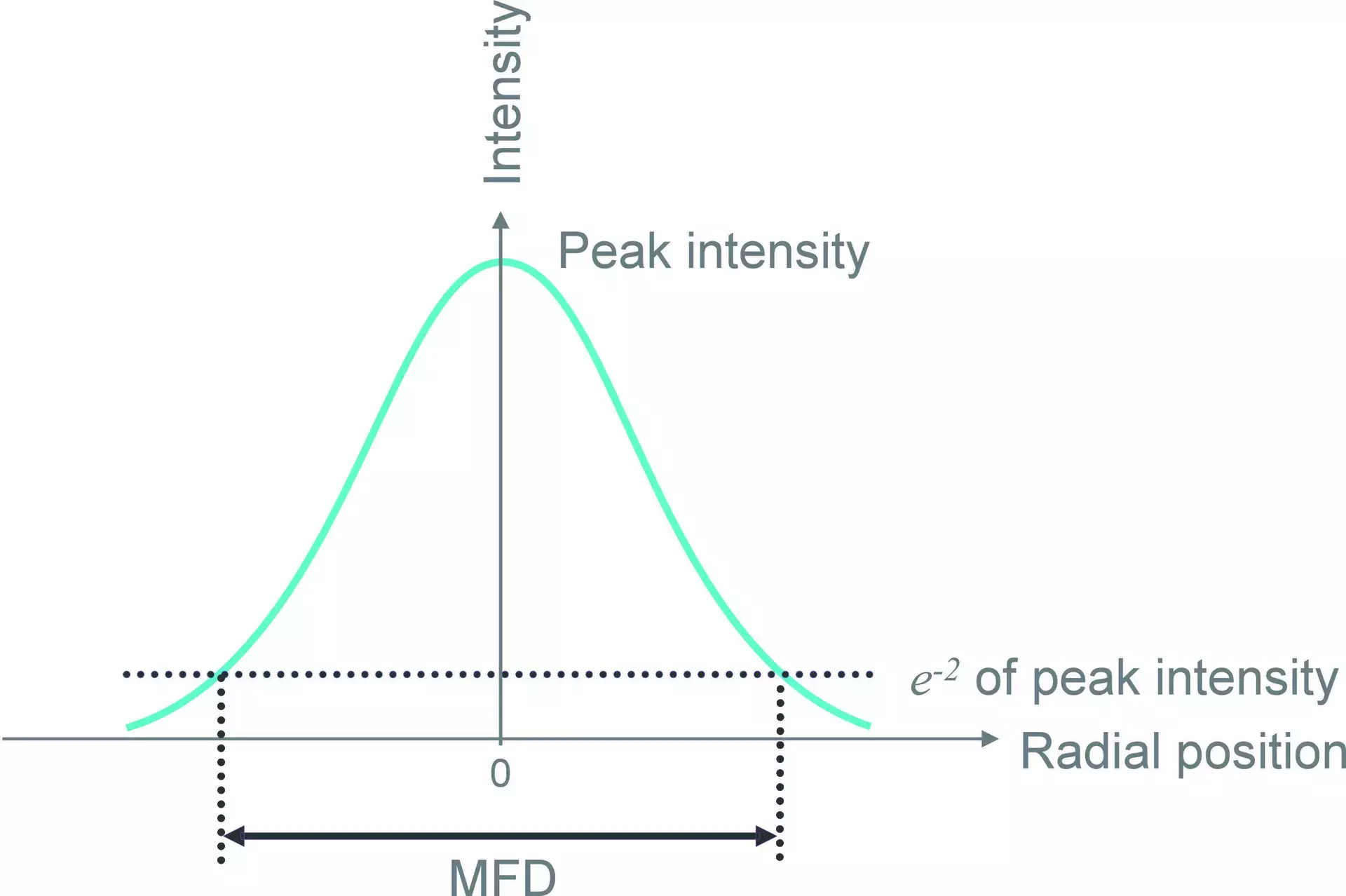Mode Field Diameter (MFD)
Mode field diameter (MFD) is important because, as a measure of the size of the optical field itself, it enables you to design launch-optics to match the mode of the source to that of the fiber and so maximize launching-efficiency. MFD is determined by the numerical aperture (NA) and cut-off wavelength of the fiber and is related to the diameter of the fiber core. In general, MFD is greater than the physical diameter of the fiber core - which means that some optical power is always guided by the fiber cladding.
MFD is typically defined as the radial position where intensity falls to e-2 of the peak intensity. MFD for any step-index fiber may be estimated from NA and cut-off information to calculate the V-value, which is directly related to the MFD by the following approximation:

V = V-value of fiber
a = core radius

The MFD is typically larger than the core diameter, though of course varies with the interplay of parameters that affect V-value. In telecoms fiber operated above cut-off, the core diameter might be around 9 µm, and the MFD is around 10.4 µm. With very high NA fiber, up around 0.2 or 0.3, the core diameter is just a few microns while MFD might be around 5 µm.
From these equations, you can see that MFD increases as cut-off wavelength increases (as does core-size). Also, for a fixed cut-off, the further above cut-off you transmit the larger the MFD becomes - that is the more power is transmitted in the cladding.
For more information on the relationship between cut-off, NA and MFD, please request our technical note 'Bend Induced Loss in Optical Fibers'.
Related Terms: Core, Cut-Off Wavelength, Mode Field Diameter (MFD), Numerical Aperture (NA), V-Value